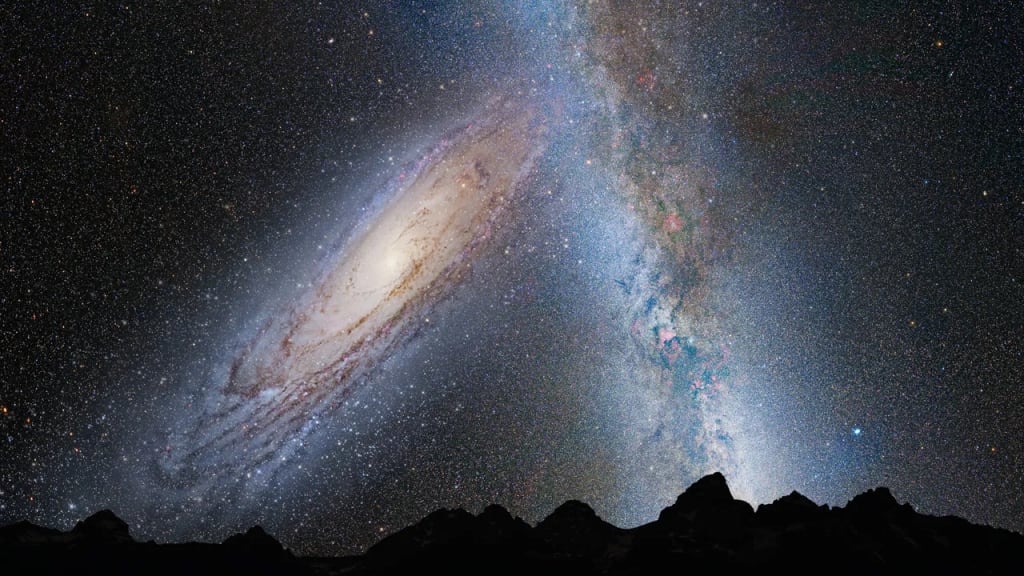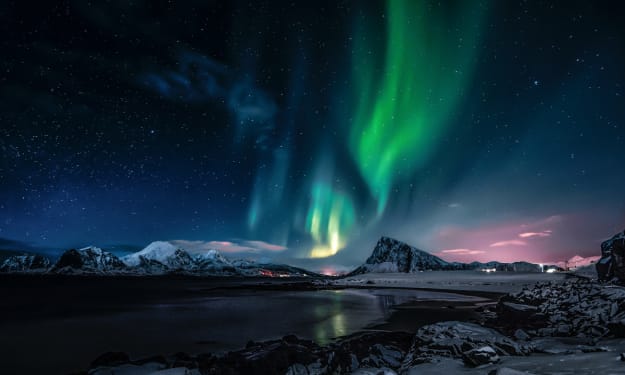What if our universe were to collide with another?
Home planet Earth and its satellite the moon zooming out

This is our home planet, Earth, and its satellite, the Moon, as we zoom out. Here we have our solar system, followed by the vast expanse of the Milky Way galaxy. We are but a minuscule dot amidst an infinite number of stars. Moving even further out, we encounter a cluster of galaxies, depicted as dots and swirls in the boundless space. Beyond that lies the Laniakea supercluster, where our galaxy resides. Continuing on, we come across the Hydra-Centaurus supercluster, which consists of immense clusters comprising thousands of galaxies. From this perspective, they appear no larger than a mere speck. Next, we encounter the Pavo-Indus supercluster, an expansive region spanning 200 million light years. As we continue to zoom out, we eventually witness the entirety of the observable universe. Each tiny dot within this vast expanse actually contains thousands of galaxies and an inconceivable number of stars. Scientists speculate that our universe may resemble a bubble, and it is conceivable that this bubble could collide with another universe. In fact, the existence of other universes is not out of the realm of possibility. It is even plausible that an infinite number of universes have emerged following the Big Bang. The occurrence of collisions between these universes is not impossible, as it may have transpired in the past.
Prior to the present moment, and the evidence to support this claim is available, in the direction of the constellation Uranus, there exists a location known as the urinous super void. This vast expanse spans approximately 1 billion light years in width. In comparison, the entirety of our galaxy measures a mere 100,000 light years. Remarkably, this void is devoid of any discernible matter or entities. It is postulated that this void may be a remnant of a previous collision between our universe and another. Scientists hypothesize that these universes were in close proximity to one another, resulting in minimal distance between them. The gravitational forces exerted by these cosmic bubbles began to draw them towards each other, akin to two droplets of water attempting to merge when in close proximity. However, the velocity of these universes was too great for them to sustain interaction, leading to the other universe tearing away a portion of our own cosmic bubble. It is estimated that approximately 10,000 galaxies may have resided within this void, all of which were either obliterated or assimilated by the invading universe. Let us embark on a journey to the outermost reaches of our universe to observe how this collision may have transpired. We find ourselves situated 10 billion light years away from our familiar abode, within another galaxy. Here, we witness awe-inspiring nebulae, displaying a myriad of vibrant hues and captivating shapes. Furthermore, if we direct our gaze in the opposite direction, we encounter an immense wall hurtling towards us. Each luminous spark adorning this wall represents colossal galaxies on the verge of colliding with our own. However, in actuality, this wall serves as an enormous mirror, solely reflecting our own universe. Within this region, the fabric of spacetime becomes distorted and commences being drawn into another universe at an astonishing velocity. At this juncture, the conventional laws of physics may cease to operate as expected, potentially resulting in the absence of gravity.
If such a scenario were to occur, the consequences would be catastrophic. The gravitational forces between the universes would cause the stars to explode, resulting in weightlessness for those on planetary surfaces. However, if the universes were to collide directly, the situation would be even more terrifying. The immense amount of energy generated from the collision would likely lead to a tremendous explosion, obliterating everything within our cosmic bubble. Furthermore, the merging of the two universes would initiate a chaotic sequence of events. Initially, the galaxies located at the periphery of the universes would be torn apart. Subsequently, the galaxies would begin to move erratically, colliding, breaking apart, and exploding. The collision of two galaxies is an event of monumental proportions, and unfortunately, it is a possibility that could befall our own home in the near future. In terms of spatial measurements, the Andromeda galaxy is currently heading towards our own Milky Way. This spiral galaxy, which is approximately twice the size of ours, contains an astounding trillion stars, twice the number found in our own galaxy. At the core of this luminous galaxy lies a menacing entity - a black hole with a mass equivalent to 2.8 times that of our Sun. Additionally, there are red giants, hundreds of times larger than our Sun, pulsars emitting immense amounts of energy, rogue stars, and numerous large and small black holes. This amalgamation of hazardous objects is steadily approaching us at a velocity of 68 meters per second, a speed that would allow one to travel from New York to Los Angeles in a mere half a minute. The disc of the Andromeda galaxy is already visible to the naked eye on moonless nights, and as time progresses, it will continue to expand in size. As Andromeda draws nearer to our own galaxy, its gravitational pull will begin to stretch the arms of our spiral galaxy, causing them to unwind.





Comments
There are no comments for this story
Be the first to respond and start the conversation.